
In the annals of technological innovation, few entities command as much influence and fascination as the Microsoft Corporation. From its inception in 1975, this American multinational technology conglomerate has not merely adapted to the shifting tides of the digital landscape but has, in many instances, shaped them entirely. Headquartered in Redmond, Washington, Microsoft’s journey is a compelling narrative of ambition, strategic foresight, and relentless evolution, transforming from a developer of BASIC interpreters into a global powerhouse spanning software, hardware, cloud computing, and video gaming. The company’s profound impact on the rise of personal computers, driven by its seminal software offerings like Windows, laid the groundwork for an empire that would continually redefine digital interaction and enterprise productivity across the globe.
Microsoft’s trajectory is characterized by a series of defining moments, from pioneering the personal computer operating system market to venturing into the competitive world of gaming consoles and ultimately embracing the ubiquitous realm of cloud computing and artificial intelligence. This extensive history is not just a chronicle of product releases and market dominance, but also a testament to the vision of its founders and leaders who steered the company through periods of immense growth, fierce competition, and significant regulatory challenges. Understanding Microsoft’s past is crucial to appreciating its present stature as one of the most valuable public U.S. companies and a dominant force in the information technology sector, alongside peers like Alphabet, Amazon, Apple, and Meta.
This in-depth exploration will meticulously trace Microsoft’s path, dissecting key milestones, strategic decisions, and pivotal innovations that have cemented its status as an enduring titan of industry. We will embark on a chronological journey, revealing the ingenuity behind its earliest ventures, the strategic brilliance that forged its operating system and office software hegemony, and the adaptive spirit that allowed it to continuously reinvent itself. This journey underscores the company’s persistent drive to unlock productivity, spark creativity, and empower organizations and individuals alike to do their best work, leveraging technology to push the boundaries of what is possible.

1. **Founding Vision and Early Ventures (Traf-O-Data & Altair BASIC)**: The genesis of Microsoft can be traced back to the collaborative ambitions of childhood friends Bill Gates and Paul Allen, whose shared passion for computer programming laid the groundwork for a future technology giant. Their initial foray into business together began in 1972 with Traf-O-Data, an endeavor that involved selling a rudimentary computer designed to track and analyze automobile traffic data. This early experience, while seemingly modest, provided crucial insights into software development and the commercial application of computing, foreshadowing their greater aspirations.
While Gates pursued studies at Harvard University and Allen engaged in computer science at Washington State University—before eventually dropping out to work at Honeywell—their entrepreneurial spirit remained undimmed. A pivotal moment arrived with the January 1975 issue of *Popular Electronics*, which featured Micro Instrumentation and Telemetry Systems’ (MITS) Altair 8800 microcomputer. This device captured Allen’s imagination, inspiring him to propose a daring challenge: programming a BASIC interpreter for the innovative new machine, a task then considered highly ambitious.
Gates, with characteristic boldness, contacted MITS and asserted that he had a functional interpreter, prompting MITS to request a demonstration. This audacious claim spurred intense development, with Allen meticulously crafting a simulator for the Altair while Gates dedicated himself to developing the interpreter itself. Their collective efforts bore fruit spectacularly in March 1975, when they flawlessly demonstrated their working interpreter to MITS in Albuquerque, New Mexico. The success led MITS to agree to distribute the software, marketing it as Altair BASIC, a product that marked Microsoft’s first significant commercial success.
Following this triumph, Gates and Allen formally established Microsoft on April 4, 1975, with Bill Gates assuming the role of CEO. It was Allen who suggested the name “Micro-Soft,” a concise portmanteau of “micro-computer software,” encapsulating the company’s core focus. This foundational period also saw Microsoft’s first steps onto the international stage, forming an agreement with ASCII Magazine in Japan in August 1977, which resulted in the creation of its first international office, ASCII Microsoft, signaling early global ambitions. The company’s headquarters would later relocate to Bellevue, Washington, in January 1979, consolidating its operations for further expansion.
2. **The MS-DOS Era: IBM Partnership and OS Dominance**: Microsoft’s entry into the operating system (OS) business in 1980 marked a crucial turning point, initially with its own version of Unix, which it branded as Xenix. While Xenix represented an important technological venture, it was a subsequent agreement that would unequivocally solidify the company’s unparalleled dominance in the burgeoning personal computer market. This pivotal moment arrived in November 1980 when IBM, a computing titan, awarded a contract to Microsoft to provide a version of the CP/M OS for its groundbreaking IBM Personal Computer (IBM PC).
In a strategic move to fulfill this critical contract, Microsoft acquired a CP/M clone known as 86-DOS from Seattle Computer Products. Demonstrating astute business acumen, Microsoft rebranded this acquisition as MS-DOS, securing its intellectual property. Although IBM would subsequently rebrand it to IBM PC DOS for its own machines, Microsoft strategically retained ownership of MS-DOS, a decision that proved immensely consequential following the highly anticipated release of the IBM PC in August 1981. This retention of ownership was a masterstroke, as it allowed Microsoft to license its OS widely.
Crucially, while IBM copyrighted the IBM PC BIOS, necessitating reverse engineering by other companies seeking to create IBM PC compatibles, no such restriction applied to the operating systems. This asymmetry in intellectual property control created a vast opportunity for Microsoft. As the market for IBM PC compatibles rapidly expanded, fueled by the open architecture, Microsoft became the indispensable provider of the operating system that powered these machines. This strategic advantage allowed the company to scale rapidly, becoming the undisputed leading PC operating systems vendor.
The widespread adoption of MS-DOS across a multitude of PC compatibles firmly established Microsoft as a cornerstone of the personal computer revolution. This era not only demonstrated Bill Gates’ and Paul Allen’s foresight in understanding the software-hardware symbiotic relationship but also showcased Microsoft’s burgeoning ability to leverage partnerships and acquisitions for market dominance. The MS-DOS legacy endures as a testament to the company’s early strategic brilliance and its foundational role in making personal computing accessible, paving the way for future innovations and cementing its place at the forefront of the technological landscape.

3. **The Dawn of Graphical Interfaces: Windows 1.0 and the IPO Boom**: Beyond its burgeoning operating system business, Microsoft in the mid-1980s began to strategically diversify its product portfolio, recognizing the need to cater to a broader range of user needs and market opportunities. In 1983, the company expanded into new markets with the release of the Microsoft Mouse, a peripheral that would become synonymous with graphical user interfaces, and concurrently launched a publishing division aptly named Microsoft Press. These ventures signaled an early understanding of the multifaceted nature of the personal computing ecosystem, moving beyond core software to embrace hardware and content creation, though the mouse was particularly impactful given future developments.
A significant personal transition occurred within the company with Paul Allen’s resignation from Microsoft in 1983, following his diagnosis with Hodgkin’s lymphoma. Allen later recounted in his memoir, *Idea Man*, that Bill Gates had sought to dilute his share in the company during this period, citing concerns about his workload. Despite this internal tension, Allen embarked on a new chapter, becoming a prolific investor in diverse sectors including low-tech industries, professional sports teams, commercial real estate, neuroscience, and private space flight, demonstrating an entrepreneurial spirit that extended far beyond Microsoft.
However, it was the persistent pursuit of a more intuitive computing experience that truly defined this era for Microsoft. Even as it began jointly developing OS/2 with IBM in August 1985, Microsoft was simultaneously developing its own groundbreaking graphical environment. This culminated in the release of Windows 1.0 on November 20, 1985. Positioned as the first version of the Windows line, it served as a graphical extension for MS-DOS, offering users a novel visual interface and hinting at the profound shift in computing paradigms that was underway, moving away from command-line interfaces.
The company’s growth and ambition were further underscored by its physical expansion and entry into public markets. On February 26, 1986, Microsoft relocated its headquarters from Bellevue to the sprawling campus in Redmond, Washington, a move that symbolized its escalating scale. Just weeks later, on March 13, Microsoft went public with an initial public offering (IPO) on the NASDAQ exchange. The resulting surge in its stock price was nothing short of historic, creating an estimated four billionaires and approximately 12,000 millionaires among Microsoft employees, fundamentally altering the financial landscape for many within the company and solidifying its status as a significant economic force.

4. **Microsoft Office’s Ascent and Windows 3.0’s Impact**: While Microsoft was laying the groundwork for its graphical operating system, another parallel development was taking shape that would profoundly impact productivity software. In 1990, Microsoft introduced the Microsoft Office suite, a revolutionary bundling of separate, powerful applications such as Microsoft Word and Microsoft Excel. This integrated approach offered users a cohesive set of tools for various office tasks, a significant departure from purchasing and managing individual programs. The suite quickly became an indispensable component of personal and professional computing, simplifying workflows and increasing efficiency for millions.
Concurrently with the launch of the Office suite, Microsoft unveiled Windows 3.0 on May 22, 1990. This version represented a substantial leap forward for the Windows operating system, featuring streamlined user interface graphics that were more appealing and intuitive than its predecessors. Crucially, Windows 3.0 also brought improved protected mode capability for the Intel 386 processor, which enhanced stability and allowed applications to utilize memory more efficiently. These technical advancements, combined with a user-friendly experience, propelled Windows 3.0 to unprecedented levels of adoption.
The success of both the Microsoft Office suite and Windows 3.0 was symbiotic and transformative. The availability of a powerful, integrated productivity suite complemented the improved graphical environment of Windows, creating a compelling ecosystem for users. Consequently, both Office and Windows rapidly achieved dominant market positions in their respective areas. This dual dominance solidified Microsoft’s control over both the platform and the essential applications running on it, effectively establishing a standard for personal computing that competitors struggled to match.
This era also saw a deterioration in Microsoft’s partnership with IBM on OS/2. Despite having begun joint development earlier, Microsoft was simultaneously advancing its own Windows NT, which drew heavily from its copy of the OS/2 code. As Windows NT, shipped on July 21, 1993, with a new modular kernel and the 32-bit Win32 API, gained traction, Microsoft informed IBM of its progress. The strategic divergence ultimately led to the dissolution of the OS/2 partnership, with Microsoft fully committing to its Windows line. The company’s ability to innovate and execute on multiple fronts during this period set the stage for its continued expansion and market leadership throughout the 1990s and beyond, proving that its core products were not just successful, but also strategically intertwined for maximum impact.

5. **Navigating Antitrust Scrutiny and Market Power**: Microsoft’s rapid ascent to dominance in both operating systems and application software did not go unnoticed by regulatory bodies. Beginning in 1990, the Federal Trade Commission initiated an examination of Microsoft for possible collusion, particularly in relation to its partnership with IBM. This marked the nascent stages of what would become a prolonged and challenging period of legal clashes with government entities, scrutinizing the company’s business practices and market power. The very success that propelled Microsoft forward also drew the attention of those concerned with maintaining fair competition in the burgeoning technology industry.
The concerns escalated significantly on July 27, 1994, when the Department of Justice’s Antitrust Division filed a competitive impact statement that laid bare specific allegations against Microsoft. The statement asserted that, from 1988 until July 15, 1994, Microsoft had “induced many OEMs to execute anti-competitive per processor licenses.” This licensing model was central to the government’s critique, as it fundamentally altered the competitive landscape for operating systems manufacturers and PC vendors alike. The practice of per-processor licensing ensured Microsoft revenue even when its software wasn’t used.
Under the terms of a per-processor license, an Original Equipment Manufacturer (OEM) was obligated to pay Microsoft a royalty for every computer it sold containing a particular microprocessor, regardless of whether that computer was sold with a Microsoft operating system or a non-Microsoft operating system. The Department of Justice explicitly framed this practice as a “penalty, or tax, on the OEM’s use of a competing PC operating system.” The statement further highlighted that Microsoft’s use of these per-processor licenses had demonstrably increased since 1988, underscoring a systematic approach to leveraging its market position.
This regulatory pressure brought Microsoft’s business practices into the public spotlight, forcing the company to contend with accusations of monopolistic behavior. The legal actions and government investigations during this period represented a significant challenge to Microsoft’s operating model, as regulators sought to curb practices perceived as stifling competition and innovation. These early encounters with antitrust scrutiny were foundational in shaping not only Microsoft’s future legal strategies but also its public image, setting a precedent for future regulatory battles that would emerge as the company continued to expand its influence across diverse technological sectors.
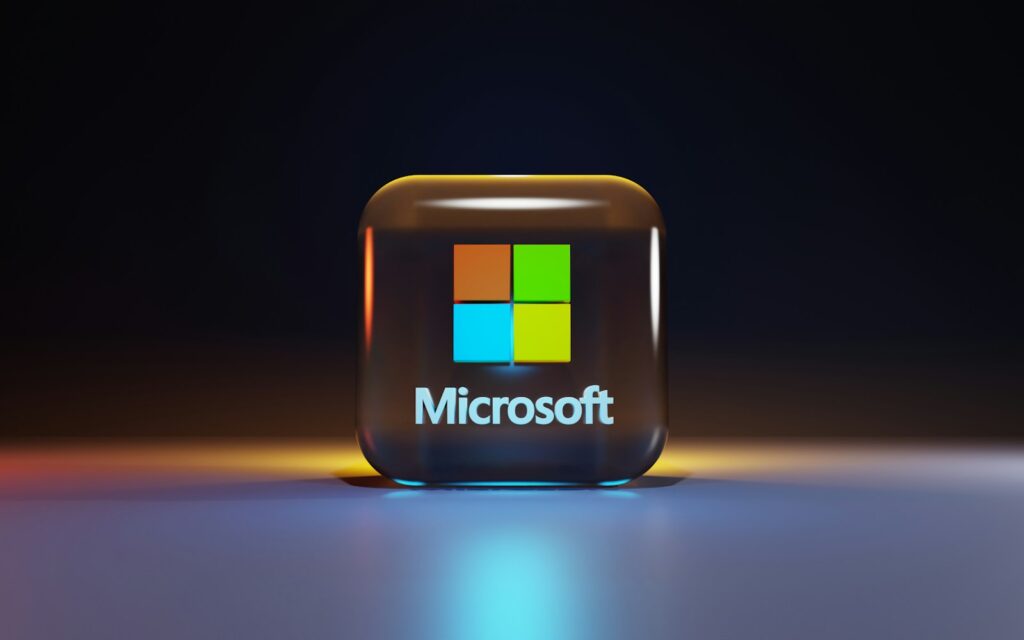
6. **The “Internet Tidal Wave” and Windows 95’s Grand Entry**: In the mid-1990s, the burgeoning World Wide Web began to emerge as a transformative force, quickly signaling a fundamental shift in computing’s future. Recognizing this seismic change, Bill Gates issued his famous internal “Internet Tidal Wave memo” on May 26, 1995. This pivotal memo served as an urgent call to action, prompting Microsoft to fundamentally redefine its product offerings and aggressively expand its presence into computer networking and the World Wide Web. Gates understood that the internet was not merely another feature but a new paradigm that demanded a complete reorientation of the company’s strategic focus.
Microsoft’s response was remarkably swift and decisive, setting it apart from many established technology firms. With only a few exceptions among emerging companies like Netscape, Microsoft was arguably the sole major, entrenched company that acted rapidly enough to become an integral part of the World Wide Web almost from its inception. This agility sharply contrasted with the slower adaptation of other industry stalwarts such as Borland, WordPerfect, Novell, IBM, and Lotus, whose hesitancy allowed Microsoft to seize a commanding market position in this new digital frontier. The company leveraged its existing user base and development capabilities to quickly integrate internet functionalities into its core products.
The culmination of this strategic pivot was the highly anticipated release of Windows 95 on August 24, 1995. This operating system represented a monumental leap forward, featuring pre-emptive multitasking, a completely redesigned user interface that introduced the now-iconic Start button, and comprehensive 32-bit compatibility. Similar to Windows NT, it provided the Win32 API, making it easier for developers to create robust applications. Windows 95 was not merely an OS upgrade; it was presented as the gateway to the internet, signaling a new era of personal computing.
Windows 95 came bundled with Microsoft’s new online service, MSN, which was initially envisioned as a competitor to the nascent Internet. For Original Equipment Manufacturers (OEMs), it also included Internet Explorer, a web browser that would soon become a key player in the browser wars. Notably, Internet Explorer was not included in the retail Windows 95 boxes at launch, as the browser team finalized development after the boxes were printed; it was instead provided in the Windows 95 Plus! pack. Backed by an unprecedented, high-profile marketing campaign—which *The New York Times* described as “the splashiest, most frenzied, most expensive introduction of a computer product in the industry’s history”—Windows 95 quickly became an undeniable commercial success, cementing Microsoft’s formidable presence in the internet age and profoundly influencing how users interacted with their computers for decades to come.
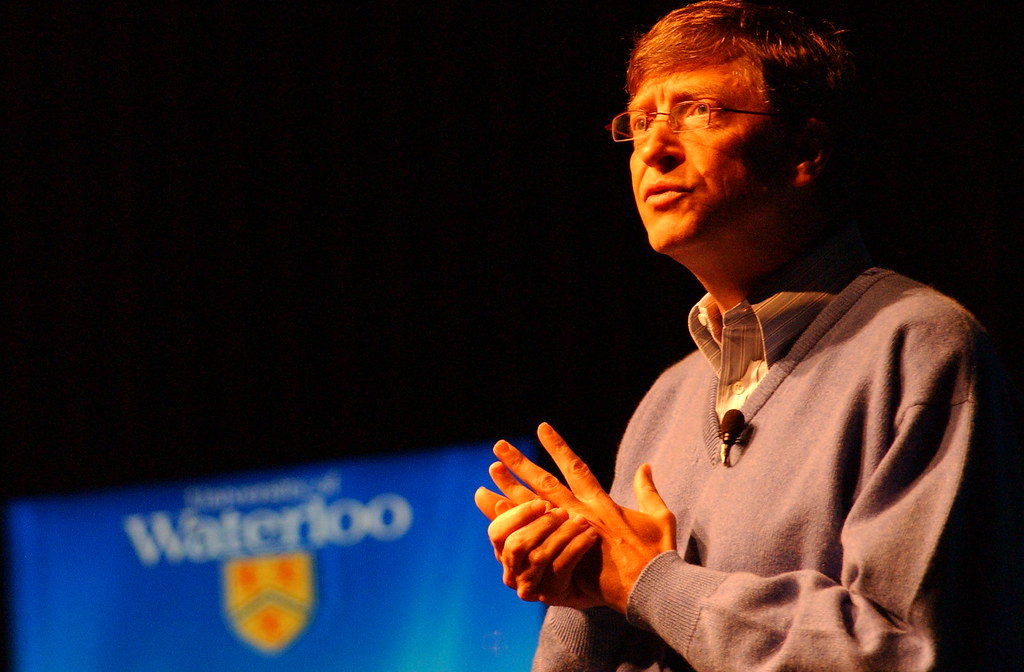
7. **Leadership Transition: Gates to Ballmer and Early 21st Century Diversification**: As Microsoft entered the new millennium, a significant leadership transition marked a pivotal moment in its corporate history. On January 13, 2000, Bill Gates, the visionary co-founder and long-serving CEO, formally handed over the reins of the chief executive position to Steve Ballmer, an old college friend of Gates and a dedicated employee of the company since 1980. This move was not an abdication of Gates’ influence; rather, he created a new, strategic position for himself as Chief Software Architect, indicating a continued focus on the technological direction and innovation at the heart of Microsoft’s business. This dual leadership structure allowed Gates to concentrate on product architecture, while Ballmer managed the expansive operational demands of a global technology giant.
During this period, Microsoft continued to diversify its product line and enter new markets, reflecting a broader strategic outlook beyond its core operating system and office software. In 1996, the company ventured into media with a significant partnership, collaborating with General Electric’s NBC unit to create MSNBC, a new 24/7 cable news channel. This move demonstrated Microsoft’s ambition to extend its digital reach into content and information delivery, exploring synergistic opportunities outside of traditional software development. The venture highlighted a willingness to engage in new industries and leverage its brand for broader media consumption.
Further demonstrating its adaptive capacity, Microsoft also focused on expanding its software offerings into emerging device categories. The company created Windows CE 1.0, a new operating system specifically designed for devices with low memory and other constraints, such as personal digital assistants (PDAs). This development underscored Microsoft’s foresight in recognizing the potential of mobile and embedded computing, laying early groundwork for future forays into handheld devices, even as those markets were still nascent. The ability to tailor its OS for varied hardware environments was a crucial evolutionary step for the company.
Moreover, the late 1990s and early 2000s were not without continued regulatory challenges. In October 1997, the Justice Department filed a motion in Federal District Court, alleging that Microsoft had violated a 1994 agreement and requested the court to halt the bundling of Internet Explorer with Windows. This legal action, a continuation of earlier antitrust scrutiny, highlighted the persistent tension between Microsoft’s aggressive market strategies and governmental concerns about anti-competitive practices. Despite these challenges, the company pressed forward with its diversification, with Gates and Ballmer at the helm, charting a course for continued growth and innovation across an expanding technological landscape, setting the stage for major product launches that would define the next decade, including a groundbreaking entry into consumer electronics.

8. **Xbox’s Entry and the Shift to Consumer Hardware**: As the new millennium dawned, Microsoft embarked on a bold venture into uncharted territory: the consumer electronics market. This strategic diversification was catalyzed by the company’s entry into the fiercely competitive video game console arena. In 2001, Microsoft unveiled the Xbox, its inaugural console, designed to challenge the established dominance of industry giants Sony and Nintendo. The Xbox distinguished itself through its graphical prowess, featuring a 733 MHz Intel Pentium III processor, a specification robust for its time, demonstrating Microsoft’s commitment to high-performance gaming.
The launch of the Xbox marked a significant moment, signifying Microsoft’s intent to move beyond its software-centric model and directly engage with consumers through hardware. Its release signaled a recognition of the burgeoning entertainment sector and the potential for synergistic growth between gaming and its broader technological ecosystem. This foray was not merely about creating a console; it was about building a comprehensive gaming platform that would integrate with online services and future software developments.
Following the initial success and learning curves of the first Xbox, Microsoft solidified its position in the gaming market with the release of the Xbox 360 in November 2005. Offered in two distinct versions, a basic model and a deluxe edition, the Xbox 360 further enhanced Microsoft’s presence, becoming a central piece of living room entertainment. This period saw the company increasingly present in the hardware business, leading to the 2006 release of the Zune series of digital media players, an evolution of its Portable Media Center software platform.
Beyond gaming and portable media, Microsoft expanded its hardware commitments, building on the legacy of its original Microsoft Mouse from 1983. By 2007, the company was credited with selling the best-selling wired keyboard, mouse, and desktop webcam in the United States. That same year, it introduced the Surface ‘digital table,’ later rebranded as PixelSense, a pioneering multi-touch surface computing device. This era underscored Microsoft’s determined push to innovate in physical products, extending its reach across various facets of consumer technology, even as it continued to face antitrust legal actions, such as the European Union’s ruling in March 2004, which cited the company for abusing its dominance with the Windows OS.
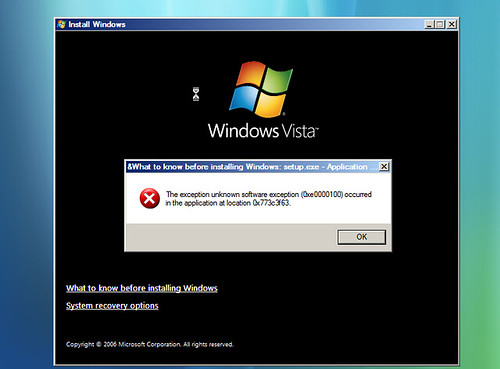
9. **Cloud Computing Genesis: Azure and the Windows Vista/7 Era**: The mid-2000s marked a period of intensive development and strategic reorientation for Microsoft, even as it continued to navigate significant regulatory hurdles. January 2007 witnessed the release of Windows Vista, the next iteration of its flagship operating system. Vista focused heavily on enhanced features, robust security, and a visually striking redesigned user interface, dubbed Aero, aiming to deliver a more modern and secure computing experience. Concurrently, Microsoft Office 2007 introduced the innovative ‘Ribbon’ user interface, a substantial departure from previous versions, which fundamentally altered how users interacted with productivity applications. The robust sales of both products contributed to a record profit for the company in 2007.
Despite these product successes, Microsoft continued to face intense scrutiny from regulatory bodies. On February 27, 2008, the European Union imposed another substantial fine, this time for €899 million ($1.4 billion), citing Microsoft’s non-compliance with the March 2004 judgment. The EU contended that the company had charged rivals unreasonable prices for essential information regarding its workgroup and backoffice servers. Microsoft, however, maintained its compliance, asserting that these fines pertained to historical issues that had already been resolved, highlighting the ongoing tension between its market strategies and regulatory oversight.
A significant leadership evolution occurred in this period when Bill Gates, who had transitioned to Chief Software Architect, officially retired from that role on June 27, 2008. This decision, initially announced in June 2006, saw Gates maintain other positions related to the company, including an advisory role on key projects, ensuring his continued influence on Microsoft’s technological direction. His departure from a daily operational role allowed greater focus on philanthropic endeavors while Ballmer steered the company’s expansive operations.
The most transformative development of this era, however, was Microsoft’s strategic entry into the nascent cloud computing market. On October 27, 2008, the company officially launched the Azure Services Platform, marking its formal commitment to providing cloud services for Windows-based applications. This initiative positioned Microsoft to become a major player in the rapidly expanding cloud infrastructure landscape, laying the groundwork for a fundamental shift in its business model. Furthermore, 2007 also saw the establishment of a multi-core unit within Microsoft, mirroring similar initiatives by server companies like Sun and IBM, to address the evolving demands of computing power.
This era also heralded Microsoft’s direct engagement with consumers through physical retail spaces. On February 12, 2009, the company announced its intention to open a chain of Microsoft-branded retail stores. The first of these, the Microsoft Store, opened on October 22, 2009, in Scottsdale, Arizona, coinciding with the official public release of Windows 7. Windows 7 was designed primarily to refine Vista, focusing on enhanced ease-of-use features and significant performance improvements rather than an extensive architectural overhaul, and it quickly garnered widespread acclaim for its stability and user-friendly design.
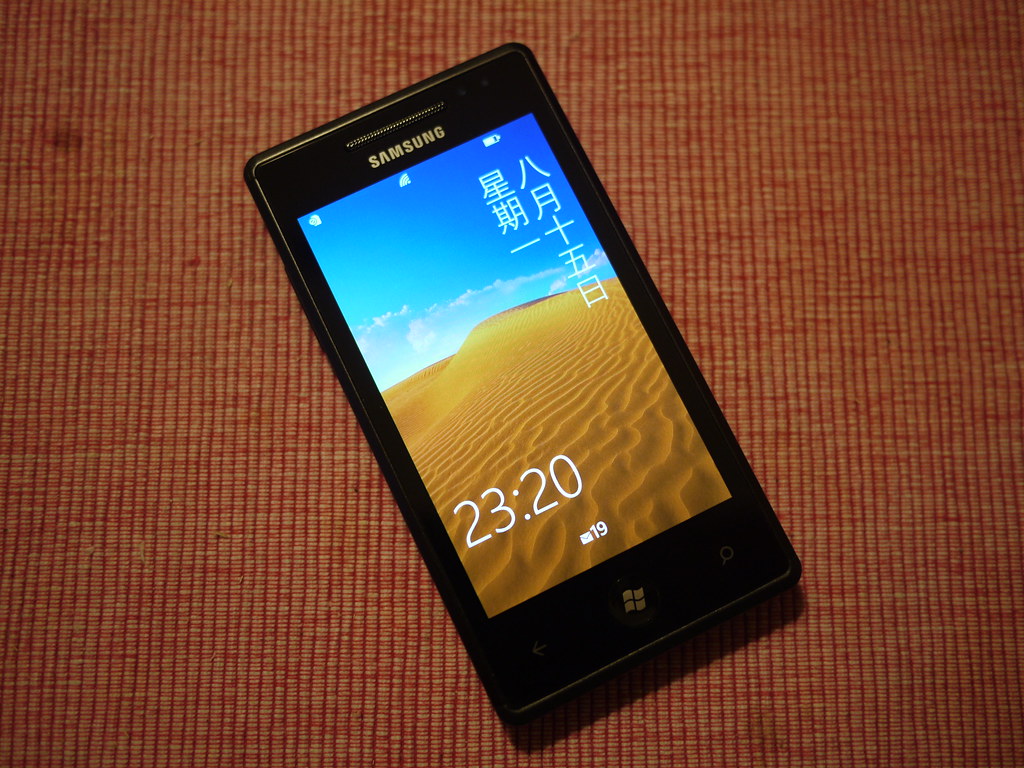
10. **Mobile Strategy Evolution and Surface Devices**: The late 2000s and early 2010s presented Microsoft with both challenges and opportunities, particularly in the burgeoning mobile sector. As the smartphone industry experienced explosive growth, Microsoft faced considerable difficulties in maintaining pace with rivals such as Apple and Google-sponsored Android in providing a contemporary smartphone operating system. Its aging flagship mobile OS, Windows Mobile, struggled to compete effectively in a rapidly evolving market, prompting a decisive strategic shift.
In response to these challenges, Microsoft undertook a significant revamp of its mobile offerings, culminating in the release of the new Windows Phone OS in October 2010. This new operating system introduced a distinctive user interface design language, codenamed “Metro,” which emphasized minimalism through the prominent use of simple shapes, typography, and iconography. Microsoft’s new strategy aimed to deliver a consistent user experience across all smartphones running the Windows Phone OS, distinguishing itself from the fragmented Android ecosystem.
To bolster its mobile ambitions, Microsoft forged a critical alliance with Nokia in 2011, working closely to co-develop Windows Phone. This partnership was intended to leverage Nokia’s hardware expertise and global market presence. Concurrently, Microsoft engaged in a gradual rebranding of its product range throughout 2011 and 2012, with its logos, products, services, and websites adopting the clean principles and concepts of the Metro design language, ensuring a cohesive brand identity across its diverse portfolio.
Beyond mobile phones, Microsoft unveiled Windows 8 in June 2011, an ambitious operating system designed to bridge the experience between traditional personal computers and the rapidly emerging tablet computer market. The public release of Windows 8 on October 26, 2012, marked a pivotal moment, introducing a touch-optimized interface alongside desktop functionality. On the same day, Microsoft launched the Surface, its first computer in company history to have its hardware made by Microsoft, signifying a deeper commitment to integrating hardware and software. This bold move into in-house PC manufacturing aimed to set a standard for Windows devices and compete directly with Apple’s integrated ecosystem.
Further demonstrating its adaptive capacity, Microsoft acquired the social network Yammer for US$1.2 billion on June 25, 2012, expanding its enterprise collaboration tools. The company also launched the Outlook.com webmail service on July 31, intended to compete directly with Gmail. These strategic moves, alongside the release of Windows Server 2012 and the Xbox One console in 2013, highlighted a period of intense diversification and a renewed focus on both consumer hardware and enterprise services, even as its mobile efforts with Nokia eventually faced significant challenges.
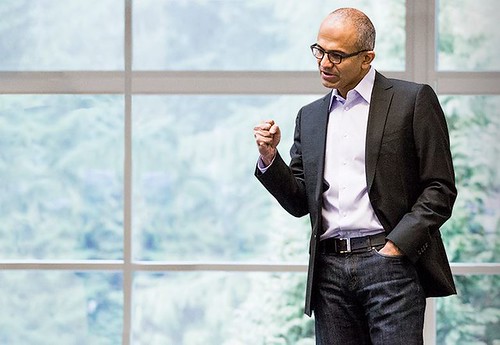
11. **Nadella’s Ascendancy and Cloud-First, Mobile-First Vision**: A monumental shift in Microsoft’s leadership and strategic direction occurred on February 4, 2014, when Steve Ballmer stepped down as CEO. He was succeeded by Satya Nadella, who had previously led Microsoft’s Cloud and Enterprise division, signaling a profound reorientation of the company’s priorities. Concurrently, John W. Thompson assumed the role of chairman, replacing Bill Gates, who remained a technology advisor. Nadella’s appointment marked the beginning of an era focused on a “cloud-first, mobile-first” philosophy, aiming to make Microsoft a ubiquitous platform across all devices and services.
Under Nadella’s nascent leadership, Microsoft continued strategic acquisitions to bolster its diversified portfolio. On April 25, 2014, the company finalized the acquisition of Nokia Devices and Services for $7.2 billion, renaming the subsidiary Microsoft Mobile Oy, underscoring its continued, albeit challenging, commitment to the mobile hardware market. A significant entry into the gaming content sphere came on September 15, 2014, with the acquisition of Mojang, the creators of the globally acclaimed game Minecraft, for $2.5 billion, expanding its intellectual property in entertainment.
The company’s flagship operating system also saw a major evolution with the release of Windows 10 on July 29, 2015, followed by its server counterpart, Windows Server 2016, in September 2016. Windows 10 was designed to unify the user experience across various devices, from PCs to tablets and beyond, reflecting Nadella’s vision of a consistent, adaptable platform. This period, however, highlighted continued struggles in the mobile phone market, with Microsoft’s share of U.S. smartphones at a modest 2.7% in January 2016. Consequently, the company incurred a $7.6 billion loss related to its mobile-phone business and initiated significant employee layoffs.
Despite the mobile challenges, Microsoft expanded into new product categories and enterprise solutions. On January 21, 2015, the company introduced the Surface Hub, an interactive whiteboard designed for collaborative workspaces, showcasing innovation in meeting room technology. Furthermore, on January 24, 2017, Microsoft showcased Intune for Education, a new cloud-based application and device management service tailored for the education sector, demonstrating its commitment to specific industry verticals. These initiatives under Nadella signaled a more outward-looking and service-oriented approach, leveraging Microsoft’s strengths in cloud and enterprise solutions while strategically adjusting its hardware footprint.
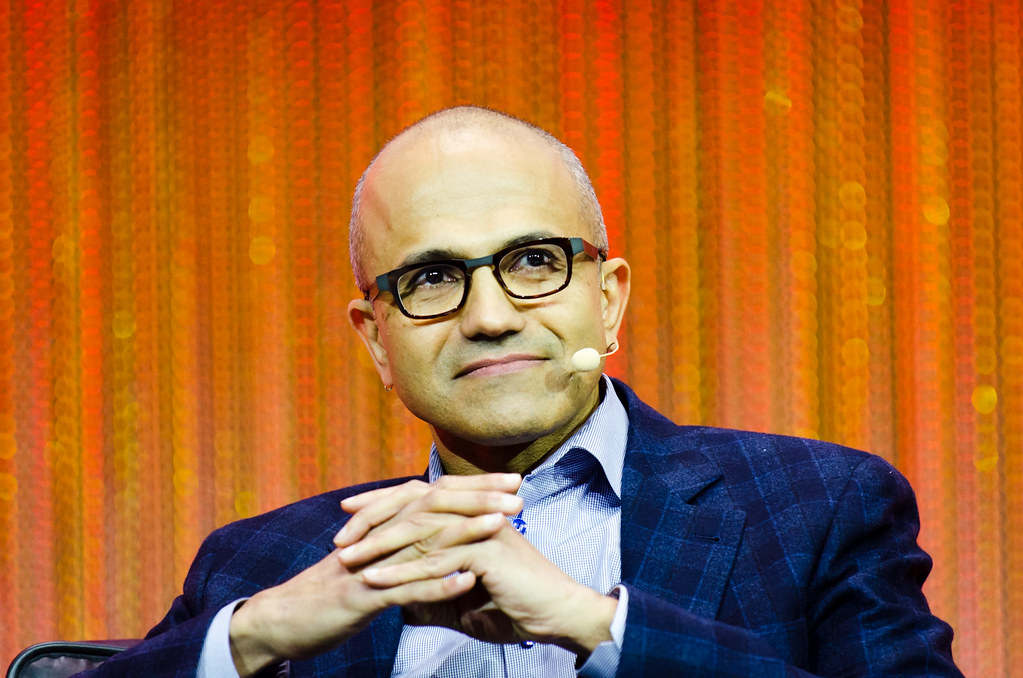
12. **Embracing Open Source and AI Initiatives**: Under Satya Nadella’s leadership, Microsoft underwent a remarkable transformation in its approach to open-source software, a stark contrast to previous corporate stances. This paradigm shift was dramatically underscored in November 2016 when Microsoft joined the Linux Foundation as a Platinum member, an event many analysts considered unthinkable a decade prior. This move, which involved an annual membership cost of US$500,000, clearly signaled the company’s deepening commitment to open-source initiatives, moving beyond its historical proprietary focus.
This embrace of open source manifested in numerous practical applications. In January 2018, Microsoft released PowerShell Core 6.0 for macOS and Linux operating systems, extending its administrative scripting tools to rival platforms. Further demonstrating this commitment, in April 2018, the source code for Windows File Manager was released under the MIT License, celebrating the program’s 20th anniversary. The company also announced Azure Sphere as its own derivative of the Linux operating system, designed for secure IoT applications, signifying a direct investment in Linux-based solutions.
Artificial intelligence (AI) and cloud computing integration also became central pillars of Microsoft’s strategy. In June 2016, the company announced Project named Microsoft Azure Information Protection, aimed at helping enterprises secure data across servers and devices. August 2018 saw a partnership with Toyota Tsusho to create AI-driven fish farming tools using the Microsoft Azure application suite for IoT technologies. These initiatives, powered by Azure Machine Learning and Azure IoT Hub, showcased Microsoft’s ambition to infuse AI across diverse industries and operational processes.
Perhaps the most significant open-source acquisition under Nadella was the purchase of GitHub for $7.5 billion, officially announced on June 4, 2018, and closed on October 26, 2018. This acquisition solidified Microsoft’s commitment to the global developer community and its open-source ecosystem, providing it with a crucial platform for collaboration and innovation. Other notable developments included the release of Surface Go, the conversion of Microsoft Teams to a freemium model, and the introduction of security initiatives like Microsoft AccountGuard and Defending Democracy, alongside the development of Azure Multi-Factor Authentication. In December 2018, Microsoft introduced Project Mu, an open-source release of the UEFI core, and announced the open-source implementation of Windows Forms and Windows Presentation Foundation, further opening key Windows development frameworks.
These strategic moves, including the discontinuation of the Microsoft Edge [Legacy] browser project in favor of a Chromium-based “New Edge” browser, marked a profound evolution in Microsoft’s corporate identity. By actively engaging with and contributing to the open-source community, and aggressively integrating AI capabilities into its cloud offerings, Microsoft repositioned itself as a leader in next-generation computing, demonstrating an adaptive strategy for continued growth and influence in the global technology landscape, despite internal protests regarding collaborations like supplying HoloLens headsets to the United States military.
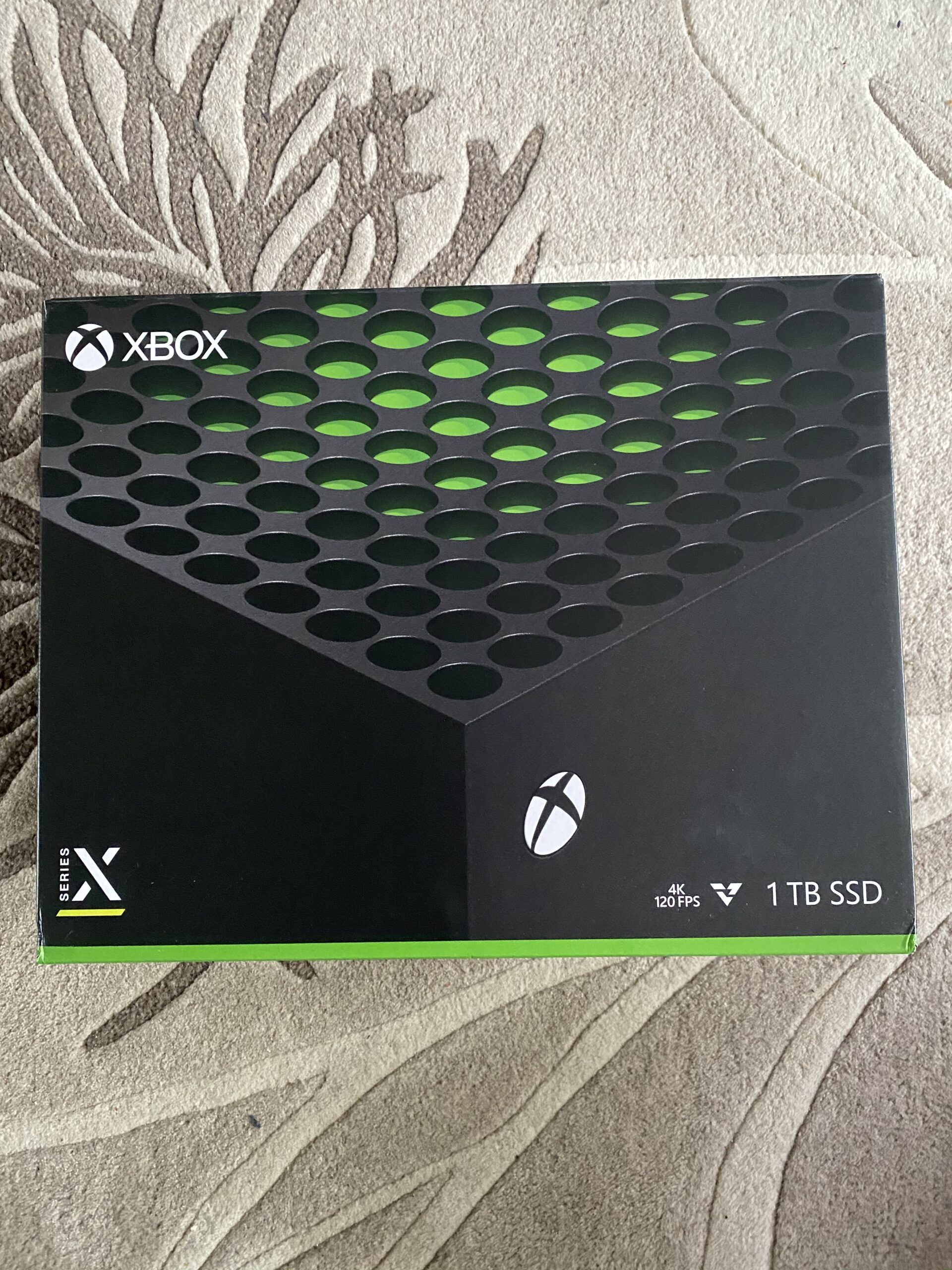
13. **Major Gaming and AI Acquisitions**: The 2020s ushered in an era of unprecedented scale in Microsoft’s acquisition strategy, particularly in the realms of gaming and artificial intelligence. On March 26, 2020, Microsoft announced the acquisition of Affirmed Networks for approximately $1.35 billion, bolstering its telecommunications infrastructure offerings. While some ventures, such as the Mixer game streaming service, were closed down, this period was largely defined by a series of high-profile acquisitions that reshaped Microsoft’s competitive standing.
Gaming remained a central focus for expansion. On September 21, 2020, Microsoft declared its intent to acquire video game company ZeniMax Media, the parent company of Bethesda Softworks, for approximately $7.5 billion. This landmark deal, finalized on March 9, 2021, integrated franchises like *Doom*, *Fallout*, and *The Elder Scrolls* into Microsoft’s Xbox Game Studios division, significantly enhancing its first-party content portfolio. This move was clearly aimed at strengthening the Xbox brand ahead of the next-generation console launch.
The release of the Xbox Series X and Xbox Series S video game consoles on November 10, 2020, further cemented Microsoft’s commitment to the gaming market. These consoles represented a leap forward in performance and gaming experience, designed to compete directly with Sony’s PlayStation 5. The strategic acquisitions ensured a robust pipeline of exclusive content for these new platforms, aiming to capture a larger share of the global gaming audience.
Parallel to its gaming ambitions, Microsoft made substantial strides in artificial intelligence. On September 22, 2020, the company announced an exclusive license to use OpenAI’s groundbreaking GPT-3 artificial intelligence language generator. GPT-3 had previously garnered significant attention for its advanced capabilities, including content generation, question answering, and even code design. This exclusive agreement positioned Microsoft at the forefront of generative AI development. Further solidifying its AI presence, in April 2021, Microsoft announced its intent to acquire Nuance Communications for approximately $16 billion, a deal completed in March 2022, bringing Nuance’s expertise in conversational AI and clinical ambient intelligence into the Microsoft ecosystem.
This period also saw Microsoft’s valuation surge, reaching nearly $2 trillion in 2021, partly due to strong quarterly earnings spurred by the COVID-19 pandemic. The increased demand for remote work and distance education during this time drove significant growth in cloud computing services and gaming sales, validating Microsoft’s strategic investments. Furthermore, in February 2021, Microsoft released Azure Quantum for public preview, providing access to quantum software and hardware, signaling the company’s long-term vision for quantum computing and its continued expansion of the Azure cloud platform.

14. **Windows 11 and the Activision Blizzard Megadeal**: The most recent years in Microsoft’s extensive history have been characterized by bold product launches and an unprecedented scale of strategic acquisitions, particularly cementing its position in cloud services, gaming, and artificial intelligence. On June 24, 2021, Microsoft surprised the technology world by announcing Windows 11 during a livestream, a development that came with some confusion given previous statements that Windows 10 would be the final version of the operating system. Windows 11 was subsequently released to the general public on October 5, 2021, featuring a redesigned user interface, enhanced performance, and new features aimed at productivity and creativity.
Beyond its core operating system, Microsoft continued to diversify through targeted acquisitions. In September 2021, the company acquired Takelessons, an online platform connecting students and tutors across numerous subjects, signaling an expansion into the online education market. In the same month, Australia-based video editing software company Clipchamp was acquired, enhancing Microsoft’s capabilities in content creation and multimedia tools. October 2021 saw Microsoft roll out end-to-end encryption (E2EE) support for Microsoft Teams calls, bolstering security for business communications, and the acquisition of Ally.io, a software service for measuring progress against OKRs, which was planned for integration into its Viva employee experience products.
The most colossal acquisition in Microsoft’s history, and indeed one of the largest in tech, was announced on January 18, 2022: the all-cash deal to acquire American video game developer and holding company Activision Blizzard for $68.7 billion. This monumental acquisition, which closed on October 13, 2023, brought iconic franchises such as *Warcraft*, *Diablo*, *Call of Duty*, and *Candy Crush Saga* under the Microsoft umbrella. Phil Spencer, head of the Xbox brand, was named the inaugural CEO of the newly established Microsoft Gaming division, which now houses Xbox operations and the three major publishers in the company’s portfolio: Xbox Game Studios, ZeniMax Media, and Activision Blizzard. This move positioned Microsoft as a formidable player in the burgeoning metaverse concept, with many observers noting its ambition to compete with companies like Meta Platforms.
Further deepening its commitment to advanced technologies, in December 2022, Microsoft announced a new 10-year deal with the London Stock Exchange Group for products including Microsoft Azure, acquiring approximately 4% of LSEG as part of the agreement. January 2023 witnessed CEO Satya Nadella announcing significant layoffs of some 10,000 employees, reflecting broader economic pressures and strategic reorganizations within the company. However, this period also saw a continued, multi-year, multi-billion dollar investment deal with ChatGPT developer OpenAI, further solidifying Microsoft’s leadership in generative AI. In June 2023, Azure Quantum Elements was released, designed to run molecular simulations, showcasing Microsoft’s relentless pursuit of innovation across the most advanced frontiers of computing.
From its humble beginnings, Microsoft has continuously evolved, expanding from software dominance into consumer hardware, cloud computing, and a major force in video gaming and artificial intelligence. Its journey through technological shifts, market competition, and regulatory scrutiny underscores a narrative of constant adaptation and strategic foresight. The company’s persistent drive to empower individuals and organizations remains a core tenet, leveraging technology to unlock productivity, spark creativity, and push the boundaries of what is possible in an increasingly interconnected and intelligent world. As Microsoft continues to innovate across its diverse portfolio, its impact on the digital landscape is poised to remain as profound and transformative as ever, solidifying its place as an enduring titan of industry.



